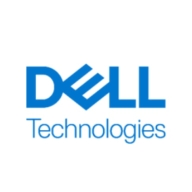


IBM FlashSystem and Dell PowerMax NVMe are high-performance storage solutions. Dell PowerMax NVMe holds the upper hand due to its advanced features, justifying the higher cost.
Features: IBM FlashSystem’s valuable features include efficient data compression, ease of management, and competitive pricing. Dell PowerMax NVMe features robust data services, high performance, and advanced data replication.
Room for Improvement: IBM FlashSystem needs better scalability, improved integration capabilities, and enhanced user documentation. Dell PowerMax NVMe can improve its initial setup process, simplify user interface, and offer better user documentation.
Ease of Deployment and Customer Service: IBM FlashSystem is known for straightforward deployment and responsive customer support. Dell PowerMax NVMe has a complex setup but offers comprehensive support once deployment is complete.
Pricing and ROI: IBM FlashSystem offers a cost-effective solution with faster ROI. Dell PowerMax NVMe, despite higher initial costs, provides justified investment through its advanced capabilities and performance gains.



Pure Storage FlashArray//X is the world’s first enterprise-class, all-NVMe flash storage array. It represents a new class of storage – shared accelerated storage, which is a term coined by Gartner – that delivers major breakthroughs in performance, simplicity, and consolidation.
Dell PowerMax is the industry’s most secure mission-critical storage platform. With NVMe Dynamic Fabric technology, PowerMax breaks from traditional storage limitations, enabling seamless integration with cloud-native and legacy applications. Designed with a powerful scale-up and scale-out architecture, PowerMax supports mission-critical applications at scale with zero downtime and ultra-low latency. The latest PowerMaxOS 10 release harnesses AI-driven efficiencies for trusted performance, capacity, and security. By choosing PowerMax, you can trust in a secure, intelligent, and always modern storage solution that unlocks the full potential of your data to drive business success.
IBM FlashSystem products are enterprise computer data storage systems that store data on flash memory chips. Unlike storage systems that use standard solid-state drives, IBM FlashSystem products incorporate custom hardware based on technology from the 2012 acquisition of Texas Memory Systems. This hardware provides performance, reliability, and efficiency benefits versus competitive offerings.
We monitor all All-Flash Storage reviews to prevent fraudulent reviews and keep review quality high. We do not post reviews by company employees or direct competitors. We validate each review for authenticity via cross-reference with LinkedIn, and personal follow-up with the reviewer when necessary.